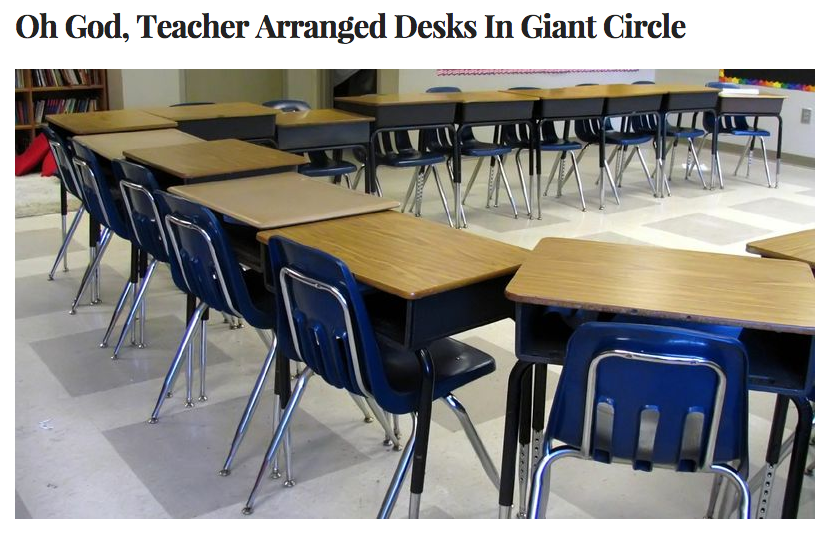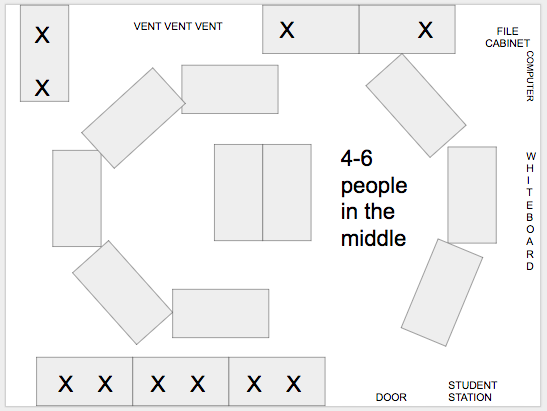Your words matter more than you know. ~A Snicker of Magic by Natalie Lloyd
Questions |
Fishbowl Discussions |
|
How can I engage my students more with this scripted curriculum I am expected to teach?
Should I choose partners for the kids or let them choose for themselves? How can I make sure all students are contributing to group work? How can I involve more students in our whole-class discussions? How can I engage those students who “only put forth the effort if they’re interested”? How can the class know the thoughts of those who don’t speak in class? How can we ALL share ideas in order to learn from each other? How can students learn to use more precise language when talking with each other? How can I provide time for students to do most of the talking in class? How can we encourage everyone to contribute so I am not the “sage on the stage,” and I am instead the “guide on the side”? |
Paul Bogush's Explanation - tinyurl.com/ShiftFishbowl
Paul's Fishbowl Rules Academic Language Scripts Fishbowl Discussion Phrases Fishbowl Response Starter Hints Fishbowl Self-Reflection Fishbowl Participation Feedback EdCafe"How To" from Katrina Kennett - tinyurl.com/ShiftEdCafe
Katrina made a NEW site - all about EdCafes in the Classroom! |
Backchannel Tools |
Harkness Method |
|
Answer Garden
Backchannel Chat Hackpad Padlet Socrative Today's Meet - gone in 2018 Verso The Benefits of Using Backchannels in Your Classroom - and 7 Reasons to Try - from Richard Byrne |
Random Pairs or Groups?
"Getting to Know You" Cards |
Harkness Method at Avenues (Video)
How to Harkness: Strategies and Advice Phillips Exeter Academy Teaching by the Harkness Method Horseshoe Debate |
Further Reading |
Reflection & Call to Action |
|
A Look At The Harkness Method Of Teaching
Gallagher, K. (2015) In the Best Interest of Students: Staying true to what works in the ELA classroom. Portland, ME, Stenhouse. Gonzalez, J. (October 15, 2015) The Big List of Class Discussion Strategies. Holland, B. (June 10, 2014) The Backchannel: Giving Every Student a Voice in the Blended Mobile Classroom Maiers, A. & Sandvold, A. (2011) The Passion-Driven Classroom: A Framework for teaching & learning. Larchmont, NY: Eye on Education November, A. (2012). Who Owns the Learning? Preparing students for success in the digital age. Bloomington, IN: Solution Tree Press. More Further Reading...6 Tactics to Help You Turn Heated Dinner Arguments into Real
Conversations by Lenora Houseworth-Weston 8 Ways Teachers Can Talk Less and Get Kids Talking More 9 Strategies for Getting More Students to Talk by Rosie Reid The Big List of Class Discussion Strategies by Jennifer Gonzalez Chat Stations from Jennifer Gonzalez Conversation Starters World The Discussion Game from AJ Juliani Grand Conversations from Ontario Ongoing Conversations from Jeff Frieden Spider Web Discussions via Michael Matera, from Alexis Wiggins Take a Chance discussion idea from Tara Martin Teaching Our Kids about the Necessary Work to Have an Opinion from AJ Juliani Teaching Your Students How to Have a Conversation from Edutopia The Three-Step System for Getting Students to Do the Talking by AJ Juliani Thoughts, Lingering Questions, or Epiphanies (TQEs) by Marisa E. Thompson (more here) Tool for Shame or Path to Growth? How Teachers Can Do "Cold Calling" Right by Gerard Dawson Toss a Thought from Tara Martin |
Consider recording a lesson (or a day). How much of the day do YOU speak, versus how much of the day do CHILDREN speak? What do you think of that number? If it is not acceptable for you, what could you incorporate tomorrow to help your students speak more in class?
What discussions about content could students in your class have? What type of choice could you provide students when it comes to discussions? How will you get more students involved in your next class discussion? Consider low-risk speaking activities. How can you include student interest to engage those students who do not participate? How will you make your class discussions more authentic - more like "real life"? School IS real life - how can you step away from the “teacher questions & student responds” type of teaching? Which method do you think best fits your next unit? |



